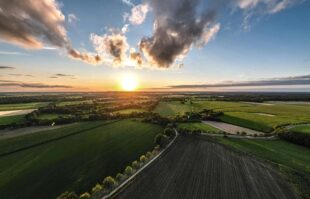Are you planning a trip to Munich, Germany, and wondering which tourist attractions to visit? Look no further. Our guide to the top 10 must-visit destinations in Munich has got you covered. From stunning historic landmarks to world-class museums, picturesque parks, and iconic architecture, we’ve compiled a list of the most captivating sights and experiences in Munich. Let us take you on a journey through this beautiful city, and help you plan a trip you’ll never forget.
1. Marienplatz
Marienplatz is the central square in Munich, Germany, and one of the city’s most iconic landmarks. It is located in the heart of Munich’s historic Old Town (Altstadt), Marienplatz serves as a central hub for shopping, dining, and sightseeing. The square dates back to the 12th century when it served as a marketplace. It was named after the Mariensäule, a Marian column erected in the center of the square in 1638 to commemorate the end of Swedish occupation during the Thirty Years’ War. One of the main attractions of Marienplatz is the Glockenspiel, a famous clock tower located on the New Town Hall (Neues Rathaus).

The New Town Hall is an impressive Gothic Revival-style building that dominates the northern side of Marienplatz. Visitors can climb the tower for panoramic views of the city. Located on the eastern side of Marienplatz, the Old Town Hall features a charming medieval facade and houses the Toy Museum. Marienplatz is surrounded by historic buildings, shops, cafes, and restaurants. St. Peter’s Church (Peterskirche), with its distinctive tower offering panoramic views, is nearby. Marienplatz hosts various events throughout the year, including Christmas markets, cultural festivals, and celebrations during major sporting events like the FIFA World Cup. Marienplatz is not only a bustling center for locals and tourists but also a symbol of Munich’s rich history and vibrant culture.
2. Hofbräuhaus
Hofbräuhaus is one of the most famous beer halls in Munich, Germany, and a quintessential Bavarian experience. It is located in the city center of Munich, near Marienplatz, at Platzl 9. It was established in 1589 by the Duke of Bavaria, Wilhelm V. Hofbräuhaus initially served as a royal brewery to supply beer to the court. Over the centuries, it evolved into a renowned beer hall and cultural institution. The beer hall exudes a lively and festive atmosphere, with long wooden tables, traditional Bavarian decor, and live music, typically featuring oompah bands playing folk tunes. Hofbräuhaus is famous for its signature beer, Hofbräu, which includes varieties such as Helles (pale lager), Dunkel (dark lager), and Weißbier (wheat beer). Visitors can enjoy beer served in traditional steins (Masskrugs) while soaking in the ambiance.
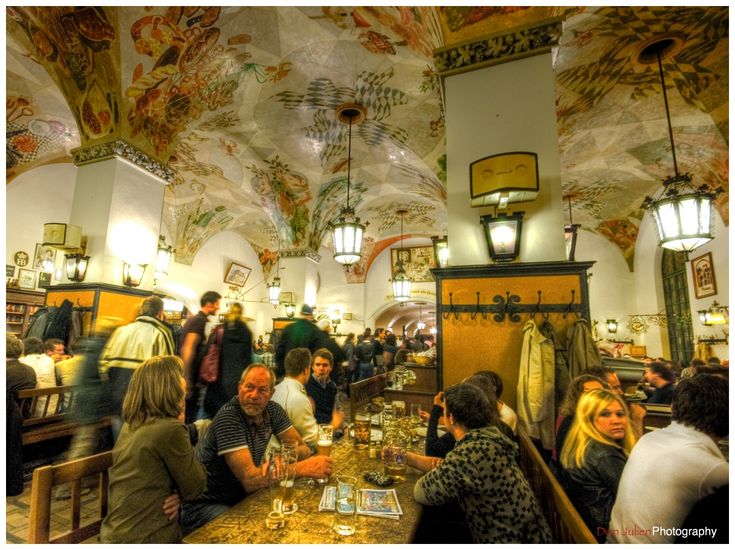
The menu at Hofbräuhaus features classic Bavarian dishes, including sausages, schnitzel, pretzels, sauerkraut, and hearty stews. It’s an excellent place to sample authentic Bavarian cuisine. In addition to the indoor beer hall, it has a spacious beer garden where visitors can enjoy their drinks and meals outdoors during the warmer months. Hofbräuhaus has played a significant role in Bavarian culture and history, attracting locals and tourists alike. It has also been frequented by notable figures throughout history, including Wolfgang Amadeus Mozart, who reportedly composed parts of his opera “Idomeneo” while visiting the beer hall. Visitors can purchase Hofbräuhaus memorabilia, including beer steins, clothing, and souvenirs, at the onsite gift shop. Hofbräuhaus offers a quintessential Bavarian experience, combining traditional beer culture, hearty cuisine, and festive atmosphere, making it a must-visit destination for anyone exploring Munich.
3. Englischer Garten
The Englischer Garten (English Garden) is one of the largest urban parks in the world, located in Munich, Germany. It was created in 1789 by Sir Benjamin Thompson, an American-born British physicist and military engineer, the Englischer Garten was initially designed as a public park for the citizens of Munich. It covers an area of over 900 acres (370 hectares), the Englischer Garten is larger than New York City’s Central Park and is one of the largest urban parks in the world. The park features sprawling green spaces, meadows, wooded areas, and picturesque waterways, including the Eisbach River, which runs through the park and forms a popular surfing spot. Visitors at the Englischer Garten can enjoy a wide range of recreational activities, including walking, jogging, cycling, picnicking, sunbathing, and boating on the park’s lakes and streams.

Within the park, there are several monuments and landmarks, including the Monopteros, a Greek-style temple offering panoramic views of the city; the Japanese Teahouse; and the Chinese Tower, a pagoda-style tower housing a beer garden. Also, the Eisbach River in the Englischer Garten is famous for its stationary wave, which has become a mecca for river surfing enthusiasts from around the world. Surfers can be seen riding the wave year-round, even in the winter. The southern section of the park, known as the “Schwabinger Bach,” is designated for naturism (nudism) and is popular among sunbathers seeking a clothing-optional experience. Adjacent to the Englischer Garten is the Munich Botanical Garden (Botanischer Garten München-Nymphenburg), which showcases a diverse collection of plants from around the world. The Englischer Garten offers a serene retreat from the hustle and bustle of the city, providing visitors with ample opportunities to relax, explore, and enjoy nature in the heart of Munich.
4. BMW Welt
BMW Welt, located in Munich, Germany, is a multifunctional exhibition facility and customer experience center operated by the BMW Group. It is situated next to the BMW Headquarters and the Olympiapark in the district of Am Riesenfeld. BMW Welt serves as a showcase for the BMW brand, its vehicles, technology, and innovation. It provides visitors with an immersive experience into the world of BMW. It was designed by the architectural firm Coop Himmelb(l)au and features a striking modern design characterized by its double cone-shaped structure and a large open atrium. The facility hosts a variety of exhibitions, displays, and interactive experiences related to BMW’s automobiles, motorcycles, and technological advancements. Visitors can explore the latest BMW models, concept cars, and prototypes. It also serves as a delivery center for customers who purchase new BMW vehicles through the European Delivery program.
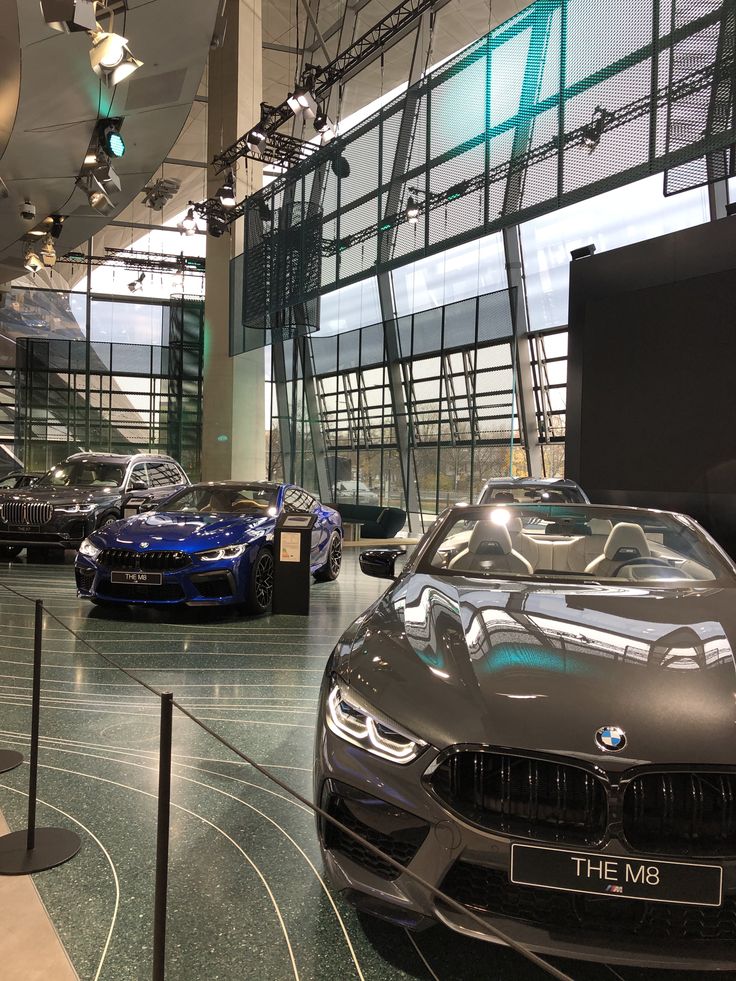
Buyers can pick up their new cars directly from BMW Welt and enjoy a personalized experience, including factory tours and driving experiences. BMW Welt hosts a wide range of events, including product launches, corporate events, conferences, and cultural exhibitions. It also features event spaces and conference facilities equipped with state-of-the-art technology. Adjacent to BMW Welt is the BMW Museum, which showcases the history, heritage, and evolution of the BMW brand and its products through various exhibits, artifacts, and interactive displays. It offers dining options, including restaurants and cafes serving gourmet cuisine and Bavarian specialties. Visitors can also explore the BMW Lifestyle Shop, which offers a range of branded merchandise, apparel, and accessories. BMW Welt provides enthusiasts, customers, and visitors with a unique opportunity to engage with the BMW brand, its products, and its values in an innovative and immersive environment.
5. Deutsches museum
The Deutsches Museum, located in Munich, Germany, is one of the world’s largest and oldest science and technology museums founded in 1903 by Oskar von Miller. The Deutsches Museum aims to showcase the achievements and advancements in science and technology throughout history. It has since grown to become one of the most renowned museums of its kind worldwide. It is situated on Museum Island (Museumsinsel) in the Isar River, near the historic center of Munich. The museum complex consists of multiple buildings and exhibition halls. The museum’s vast collection spans various fields of science and technology, including aerospace, astronomy, chemistry, physics, energy, telecommunications, transportation, and more. Visitors at the Deutsches Museum can explore a wide range of interactive exhibits, hands-on displays, and multimedia presentations that illustrate scientific principles and technological innovations. Highlights include the full-scale replicas of historic aircraft, submarines, steam engines, and space capsules.
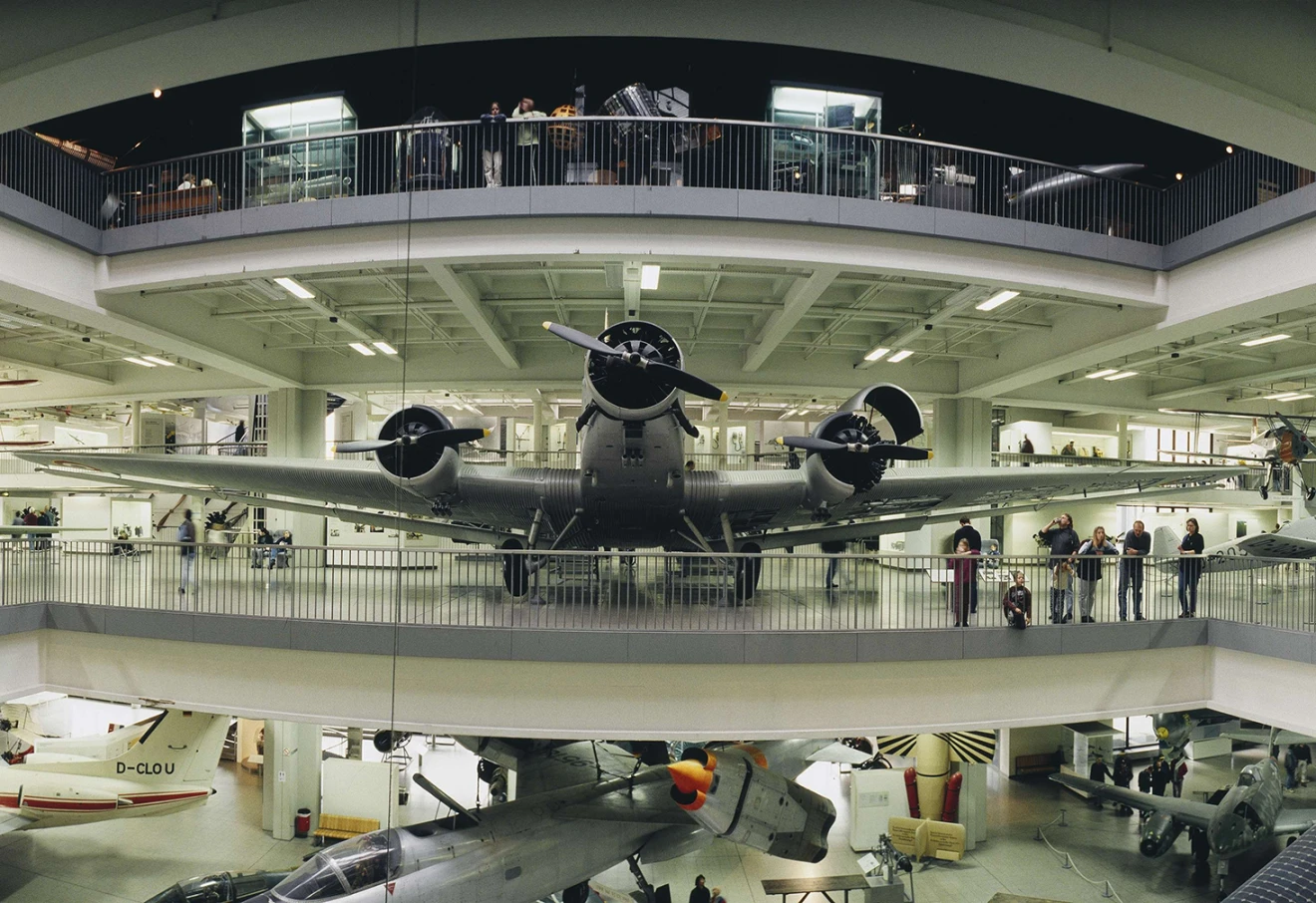
The museum features a planetarium and an observatory that offer visitors the opportunity to learn about astronomy, celestial phenomena, and space exploration through immersive shows and stargazing sessions. The Deutsches Museum regularly hosts temporary exhibitions and special events on specific topics or themes related to science, technology, and innovation. These exhibitions provide visitors with insights into cutting-edge research and emerging trends. The museum also offers educational programs, guided tours, workshops, and lectures for visitors of all ages, aimed at promoting interest and understanding in science, technology, and engineering. The Deutsches Museum is committed to making its exhibitions and facilities accessible to all visitors, including those with disabilities. It provides barrier-free access, tactile exhibits, and other accommodations to ensure inclusivity. The Deutsches Museum serves as a valuable resource for education, inspiration, and exploration, inviting visitors to delve into the fascinating world of science and technology through its extensive collection and engaging exhibits.
6. Munich Residenz
The Munich Residenz, located in the heart of Munich, Germany, is one of the city’s most impressive architectural landmarks and former royal residences. Construction of the Munich Residenz began in 1385 and continued over several centuries, with expansions, renovations, and additions made by successive rulers of the Wittelsbach dynasty, who used the palace as their primary residence until the early 20th century. The architecture of the Munich Residenz reflects various styles, including Renaissance, Baroque, Rococo, and Neoclassical, as a result of the successive renovations and expansions undertaken over the centuries. The Munich Residenz is one of the largest palace complexes in Europe, comprising over 130 rooms and spanning a total area of approximately 18 acres (7.3 hectares). Visitors to the Munich Residenz can explore its numerous rooms and galleries, which showcase lavish furnishings, artwork, tapestries, and decorative elements from different historical periods.
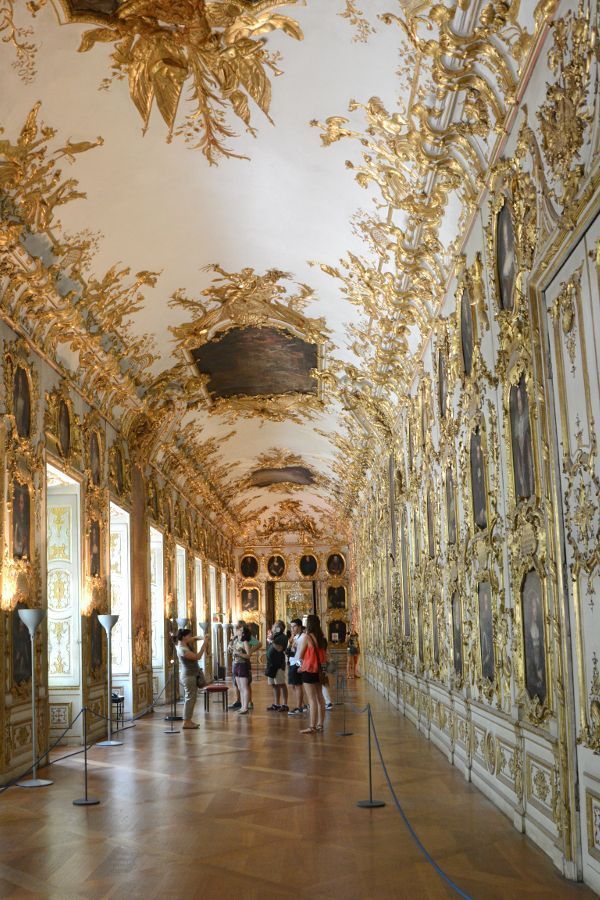
Adjacent to the Munich Residenz is the Court Church of All Saints (Hofkirche zu Allerheiligen), a magnificent Baroque church commissioned by Elector Max Emanuel in the early 18th century. The church features a stunning interior with intricate stucco work, marble altars, and ceiling frescoes. The Munich Residenz is surrounded by beautiful gardens, including the Hofgarten, a formal Baroque Garden located to the north of the palace, and the Residenzgarten, a landscaped park with fountains, sculptures, and walking paths. In addition to serving as a museum and historic site, the Munich Residenz hosts various cultural events, concerts, and exhibitions throughout the year, offering visitors the opportunity to experience the palace’s rich heritage in a dynamic and engaging way. The Munich Residenz stands as a testament to the wealth, power, and artistic patronage of the Bavarian rulers and remains a symbol of Munich’s rich cultural heritage.
7. Neuschwanstein castle
Neuschwanstein Castle is a stunning 19th-century palace located near the town of Füssen in Bavaria, Germany. Neuschwanstein Castle was commissioned by King Ludwig II of Bavaria and was built as a retreat and homage to the composer Richard Wagner. Construction began in 1869 and was never fully completed; the castle remains unfinished to this day. The castle is situated at the top of a rugged hill in the Bavarian Alps, overlooking the beautiful landscape of the Hohenschwangau valley. Its scenic location and fairytale-like appearance have earned it the nickname “the castle of the fairy-tale king.” The castle’s design was influenced by various architectural styles, including Romanesque and Gothic revival. While the exterior of Neuschwanstein Castle exudes grandeur and splendor, the interior was never fully finished. Only a few rooms were completed and furnished during King Ludwig II’s lifetime, including the Throne Room, Singer’s Hall, and King’s Bedroom.
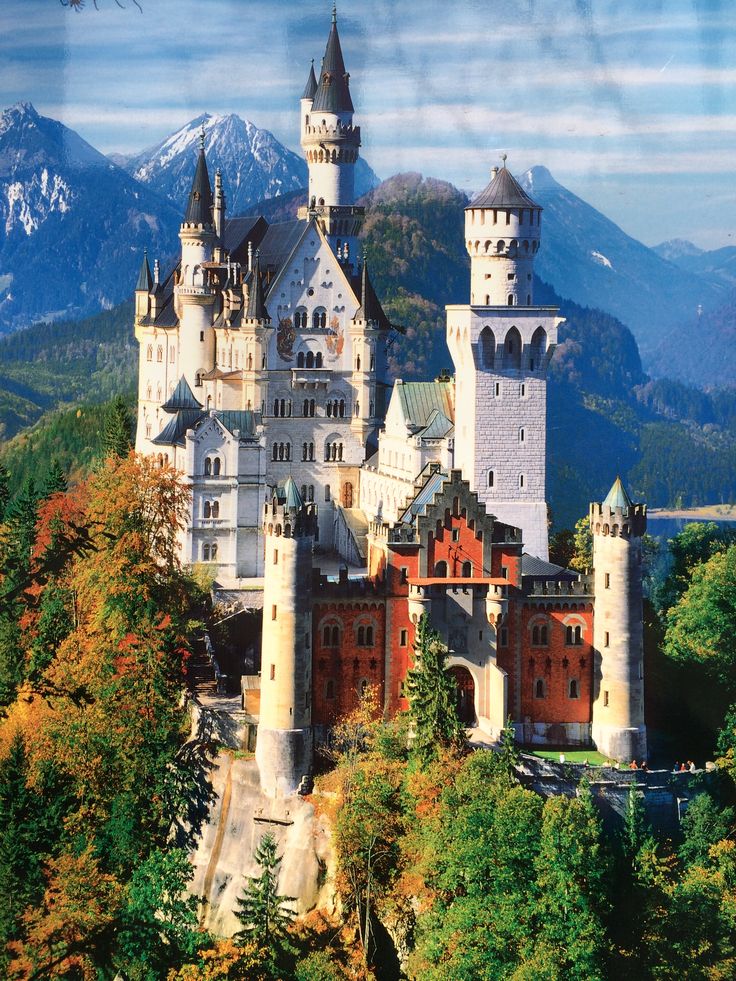
These rooms feature intricate wood carvings, colorful murals, and ornate furnishings. Neuschwanstein Castle served as the inspiration for the Sleeping Beauty Castle in Disneyland, California, and has been featured in numerous films, TV shows, and works of art, cementing its status as an iconic symbol of fairy-tale castles. Today, Neuschwanstein Castle is one of the most popular tourist attractions in Germany, drawing millions of visitors from around the world each year. Neuschwanstein Castle can be reached by car, bus, or on foot from the nearby town of Füssen. Visitors can also take guided tours or hike up to the castle for panoramic views of the surrounding landscape. Guided tours are available for visitors to explore the castle’s interior and learn about its history and construction. Neuschwanstein Castle is not only a historic landmark but also a symbol of imagination, romance, and artistic expression, captivating visitors with its enchanting beauty and timeless charm.
8. Dachau Concentration Camp
Dachau is a town in Bavaria, Germany, located approximately 20 kilometers northwest of Munich. It is primarily known for the Dachau concentration camp, which was established by the Nazis in 1933 and became one of the first and longest-operating concentration camps during World War II. The Dachau concentration camp was initially established to hold political prisoners, but it later became a prototype for other Nazi concentration camps. It served as a place of imprisonment, forced labor, torture, and extermination for tens of thousands of individuals, including Jews, political prisoners, intellectuals, Roma, Jehovah’s Witnesses, homosexuals, and others deemed “undesirable” by the Nazi regime. The Dachau concentration camp was opened on March 22, 1933, just weeks after Adolf Hitler became Chancellor of Germany. It was originally intended to detain political opponents of the Nazi regime, such as Communists, Social Democrats, and trade unionists.

However, over time, the camp’s population grew, and it became a symbol of Nazi persecution and brutality. Conditions in the Dachau concentration camp was harsh and dehumanizing. Prisoners were subjected to forced labor, malnutrition, overcrowding, physical abuse, medical experiments, and systematic extermination through gas chambers and mass shootings. Many prisoners died from disease, starvation, exhaustion, or outright murder. Today, the Dachau concentration camp serves as a memorial and museum dedicated to honoring the memory of the victims and educating visitors about the Holocaust and the dangers of totalitarianism and prejudice. The memorial site includes historical exhibits, preserved barracks, crematoriums, and monuments, as well as audiovisual presentations and guided tours. Visiting Dachau can be a deeply emotional and educational experience, offering visitors the opportunity to pay tribute to the victims, reflect on the lessons of history, and reaffirm a commitment to tolerance, justice, and peace.
9. Viktualienmarkt
The Viktualienmarkt is a vibrant open-air market located in the heart of Munich, Germany. The Viktualienmarkt has a long history dating back to the early 19th century when it was established as a farmers’ market to provide fresh produce and food for the residents of Munich. Over the years, it has grown into one of the city’s most popular and iconic markets. The market is situated in the Altstadt (Old Town) district of Munich, just a short walk from Marienplatz and the city center. The Viktualienmarkt offers a wide variety of fresh produce, meats, cheeses, baked goods, flowers, herbs, spices, and specialty foods from local Bavarian farmers, artisans, and producers. Visitors can find everything from seasonal fruits and vegetables to homemade sausages, artisanal cheeses, and freshly baked bread.

The Viktualienmarkt is also known for its lively and bustling atmosphere, with vendors calling out their wares, shoppers browsing the stalls, and locals gathering to socialize and enjoy the vibrant ambiance. Throughout the year, the Viktualienmarkt hosts various events, festivals, and cultural celebrations, including culinary demonstrations, wine tastings, live music performances, and seasonal markets such as the Christmas market and the Maibaumfest (Maypole Festival). The market is adorned with several monuments and landmarks, including the Viktualienmarkt Fountain (Viktualienmarkt Brunnen), which features a statue of Bavaria surrounded by allegorical figures representing agriculture, trade, and industry. The market is easily accessible by public transportation, with nearby tram and subway stops. It is also within walking distance of many of Munich’s major attractions, making it a convenient destination for visitors exploring the city. The Viktualienmarkt is not only a place to shop for fresh, high-quality food but also a cultural and culinary hub where visitors can immerse themselves in the rich flavors and traditions of Bavarian cuisine and hospitality.
10. Nymphenburg Palace
Nymphenburg Palace, located in Munich, Germany, is a magnificent Baroque palace that served as the summer residence of the Bavarian monarchs. Nymphenburg Palace was commissioned by Elector Ferdinand Maria of Bavaria and his wife, Henriette Adelaide of Savoy, in 1664 as a summer residence and hunting lodge. Over the centuries, it underwent several expansions and renovations under various rulers of the Wittelsbach dynasty. It features a central corps de logis flanked by symmetrical wings, grand courtyards, ornate facades, and decorative elements such as statues, fountains, and intricate stucco work. The palace is surrounded by sprawling gardens and parklands designed in the Baroque and Rococo styles. The gardens feature manicured lawns, flower beds, water features, and wooded areas, as well as several pavilions, follies, and sculptural adornments. Within the palace grounds are several pavilions and outbuildings, including the Amalienburg, Badenburg, Pagodenburg, and Magdalenenklause, each designed for specific purposes such as leisure, entertainment, or religious contemplation.
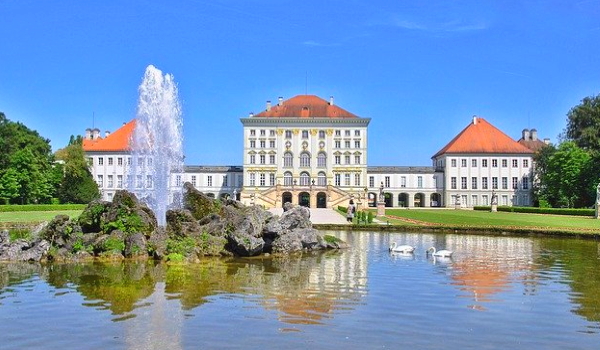
Adjacent to the palace is the Nymphenburg Porcelain Manufactory, founded in 1747 by Elector Max III Joseph of Bavaria. The manufactory produces exquisite, handcrafted porcelain objects, including tableware, figurines, and decorative pieces. Today, Nymphenburg Palace is open to the public as a museum, allowing visitors to explore its rich history, architecture, and art collections. The palace also hosts temporary exhibitions, cultural events, and concerts throughout the year. Visitors to Nymphenburg Palace can explore its opulent rooms, including the Great Hall, Gallery of Beauties, Hall of Mirrors, and Chinese Cabinets. Nymphenburg Palace is easily accessible by public transportation from the center of Munich. Guided tours are available for visitors who wish to learn more about the palace’s history and significance. Nymphenburg Palace stands as a testament to the wealth, power, and artistic patronage of the Bavarian rulers and remains a symbol of Munich’s rich cultural heritage.

 on
on 
